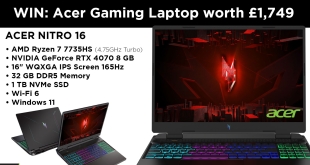There is plenty of graphics card news to unpack today as last night during Siggraph, Nvidia officially announced the Turing architecture alongside a new range of Quadro RTX GPUs. The announcement places Ray Tracing directly in the spotlight and hints heavily at what we'll be seeing at next week's GeForce event.
After months of leaks and rumours, Nvidia has officially confirmed that its next architecture is indeed ‘Turing'. The rollout kicks off with three new graphics cards under the Quadro RTX banner, including the RTX 8000, RTX 6000 and RTX 5000. According to Nvidia, Turing represents the “greatest leap” since the introduction of CUDA cores in 2006. With Turing, Nvidia has implemented new ‘RT Cores' to accelerate ray tracing and Tensor Cores (which debuted with Volta) for AI inferencing. Combining these two technologies is what makes real-time ray tracing possible.
Nvidia talked a bit about ray tracing back in March during GDC. This technology brings ‘real-time movie quality rendering' to games- the biggest difference can be observed in lighting and how it interacts with the world in a natural, life-like way. Speaking at Siggraph this week, Nvidia CEO, Jensen Huang, described ray tracing and hybrid rendering as the company's “most important innovation” in more than a decade, even going as far as to call ray-tracing the “holy grail” of the graphics industry.
We'll be hearing a lot more about ray-tracing in videogames during Nvidia's GeForce event on Monday, where we are expecting to see the RTX 2080 graphics card announced. In the meantime, lets dive into the Quadro RTX specifications.
Quadro RTX 8000:
- Memory: 48GB Samsung GDDR6
- Memory w/ NVLink: 96GB
- Ray-tracing: 10 GigaRays/sec
- CUDA cores: 4,608
- Tensor cores: 576
Quadro RTX 6000:
- Memory: 24GB Samsung GDDR6
- Memory w/ NVLink: 48GB
- Ray-tracing: 10 GigaRays/sec
- CUDA cores: 4,608
- Tensor cores: 576
Quadro RTX 5000:
- Memory: 16GB Samsung GDDR6
- Memory w/ NVLink: 32GB
- Ray-tracing: 6 GigaRays/sec
- CUDA cores: 3,072
- Tensor cores: 384
Pricing is of course, quite high, with the RTX 8000 coming in at $10,000, the RTX 6000 coming in at $6,300 and the RTX 5000 coming in at $2,300. Our guess would be that the RTX 2080 will be running a version of the chip found on the RTX 5000 but we won't know for sure until all of these graphics cards start shipping out and we can dig deeper.
KitGuru Says: Nvidia is betting big on ray-tracing becoming the next big thing in graphics, and the company seems to have a healthy lead over the competition at this point. Quadro RTX already sounds impressive, now our attention turns to Nvidia's event next Monday, where we will hopefully see the consumer implementation of this technology in the form of a GTX 1080 successor.
 KitGuru KitGuru.net – Tech News | Hardware News | Hardware Reviews | IOS | Mobile | Gaming | Graphics Cards
KitGuru KitGuru.net – Tech News | Hardware News | Hardware Reviews | IOS | Mobile | Gaming | Graphics Cards


